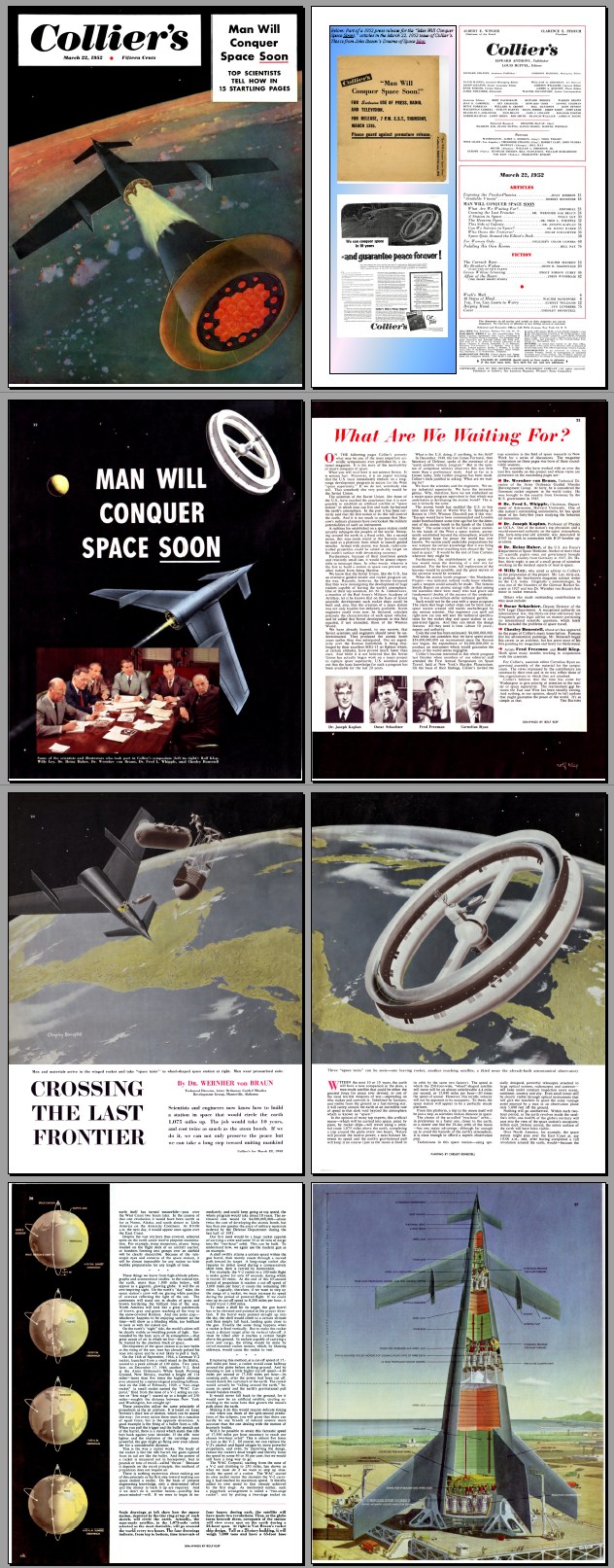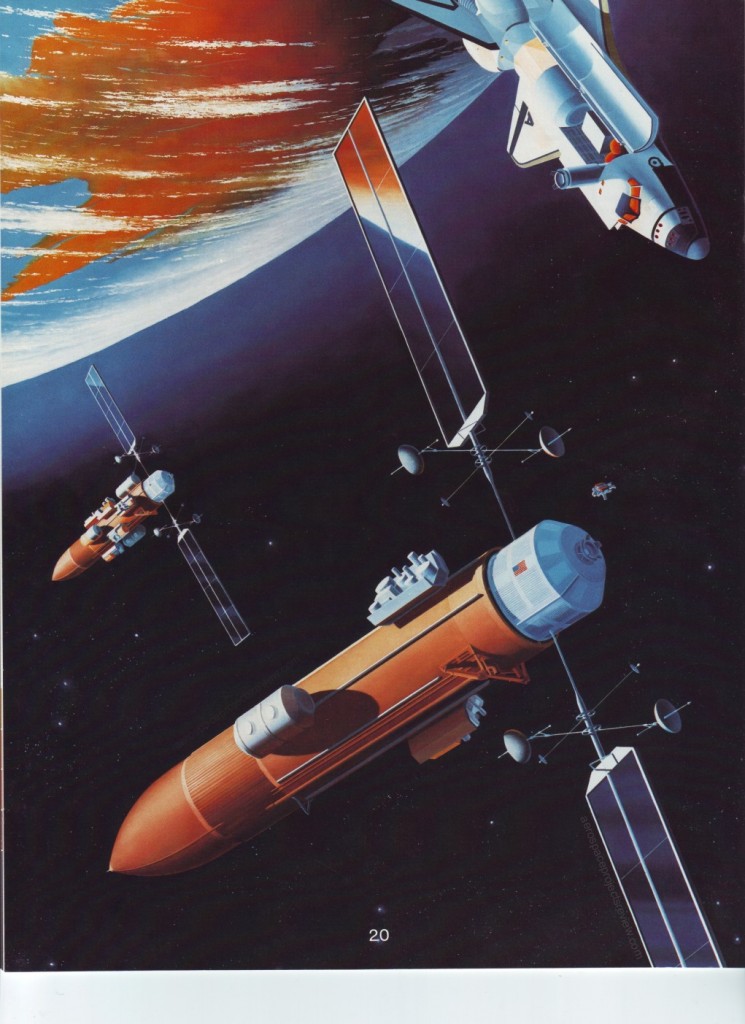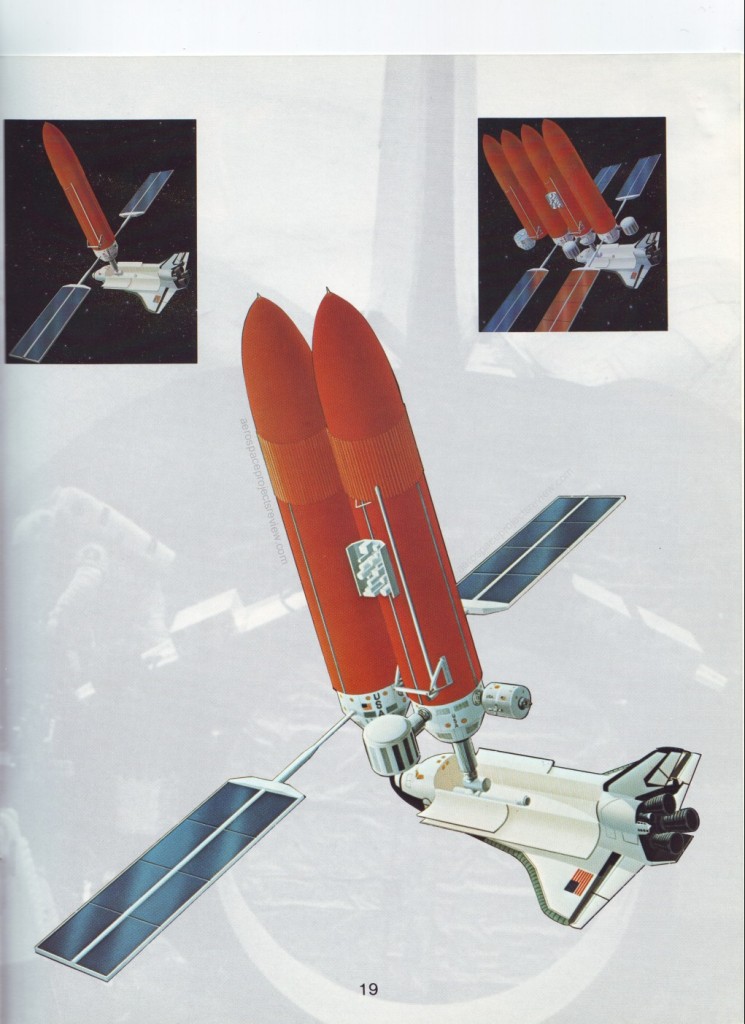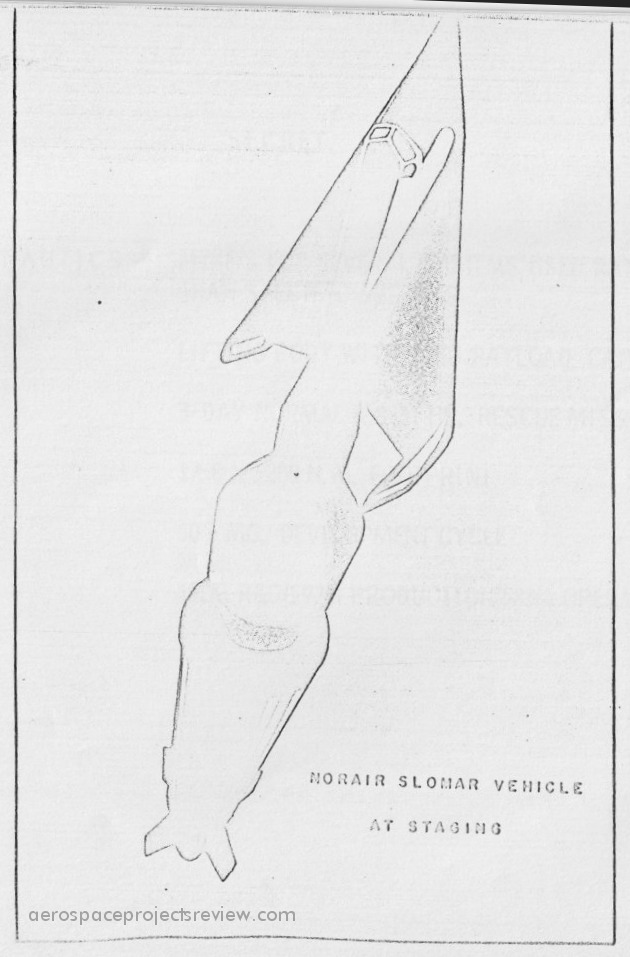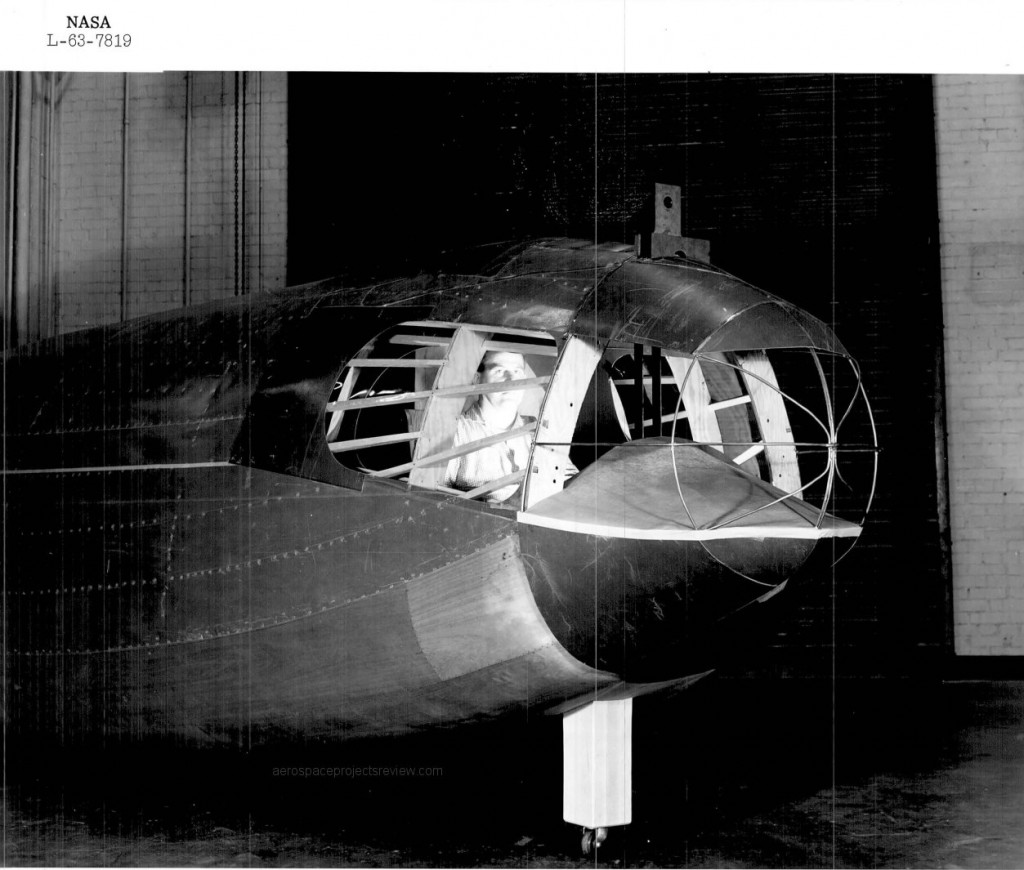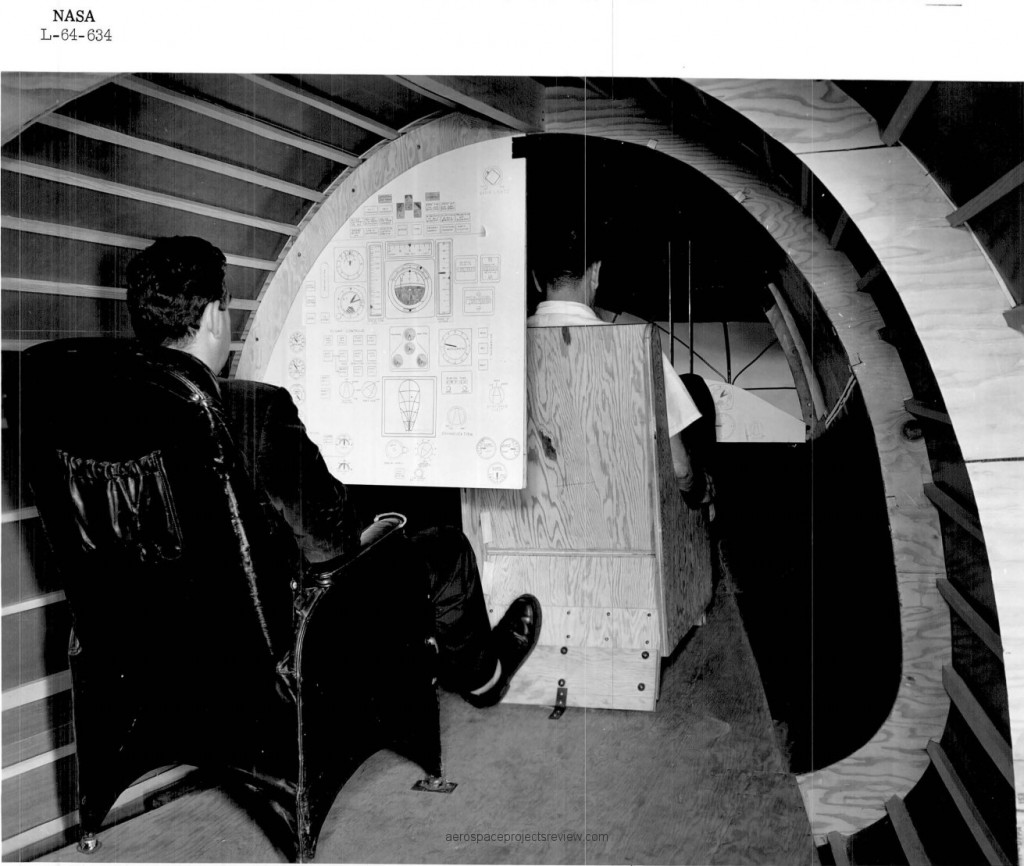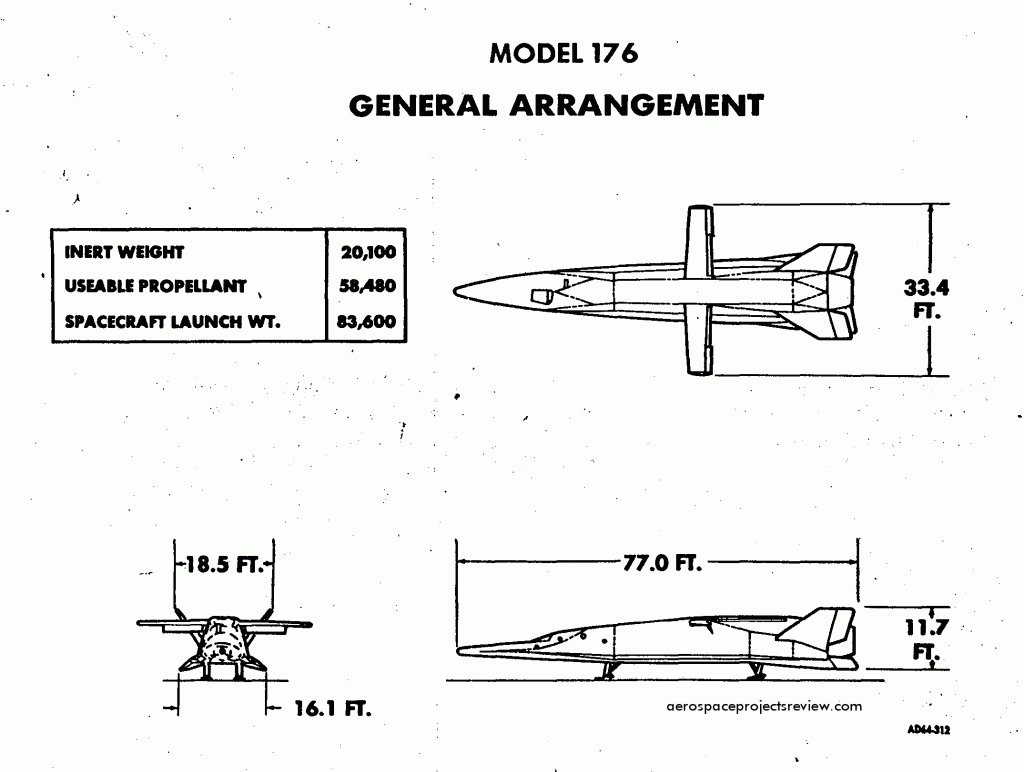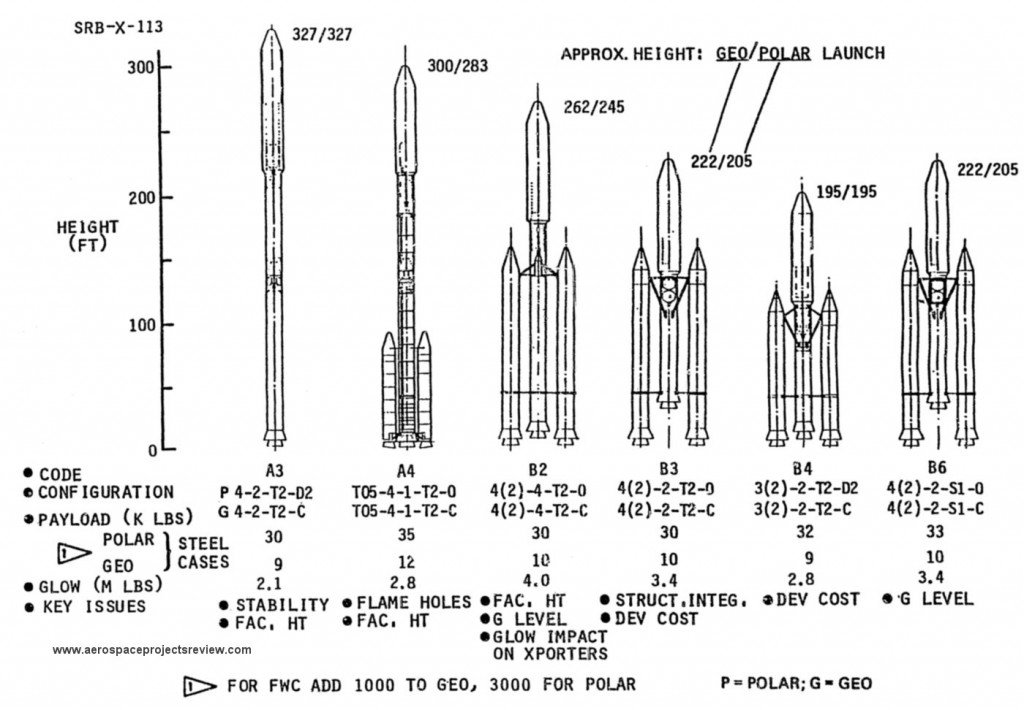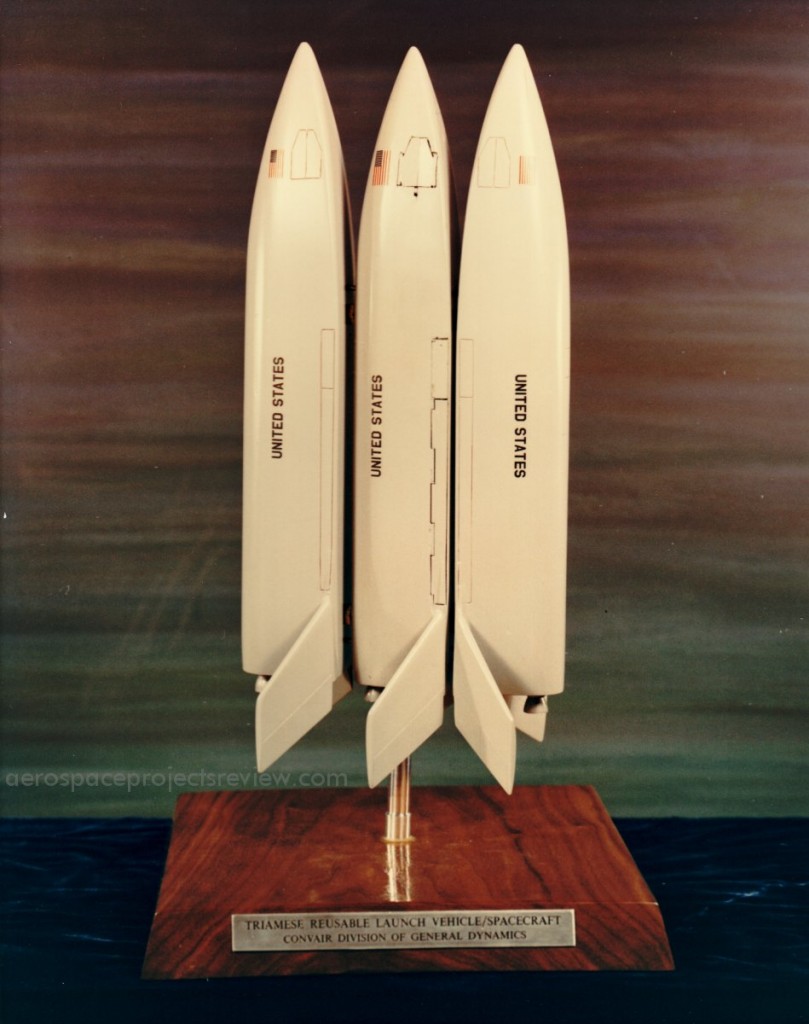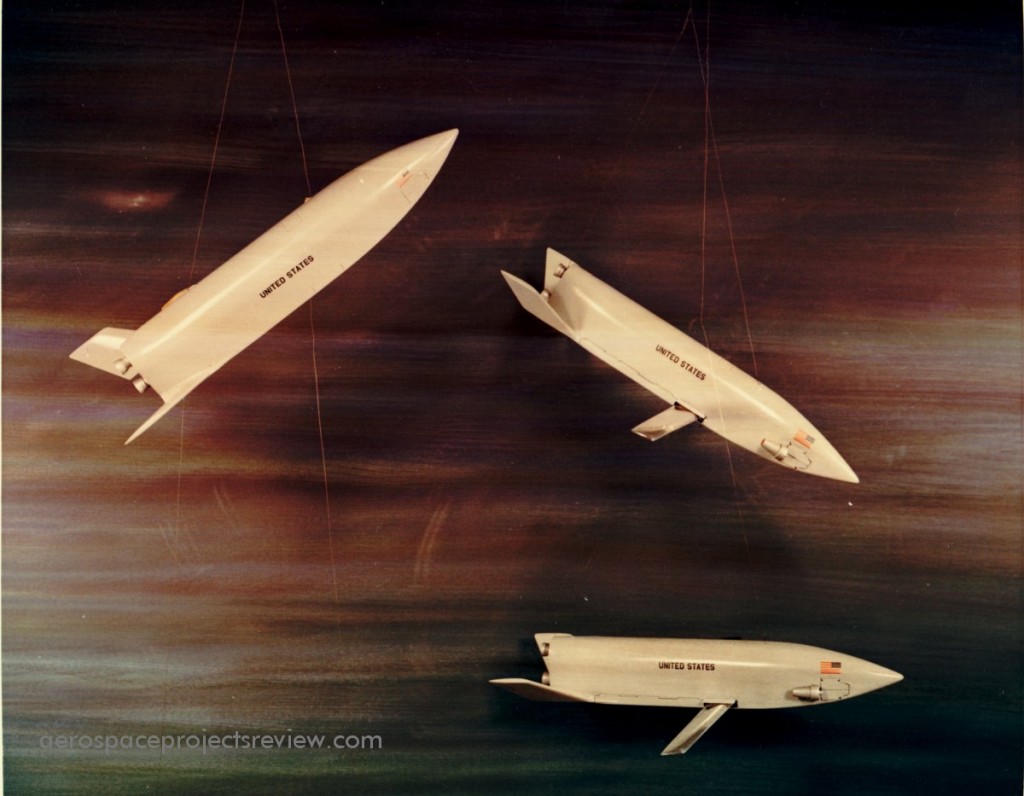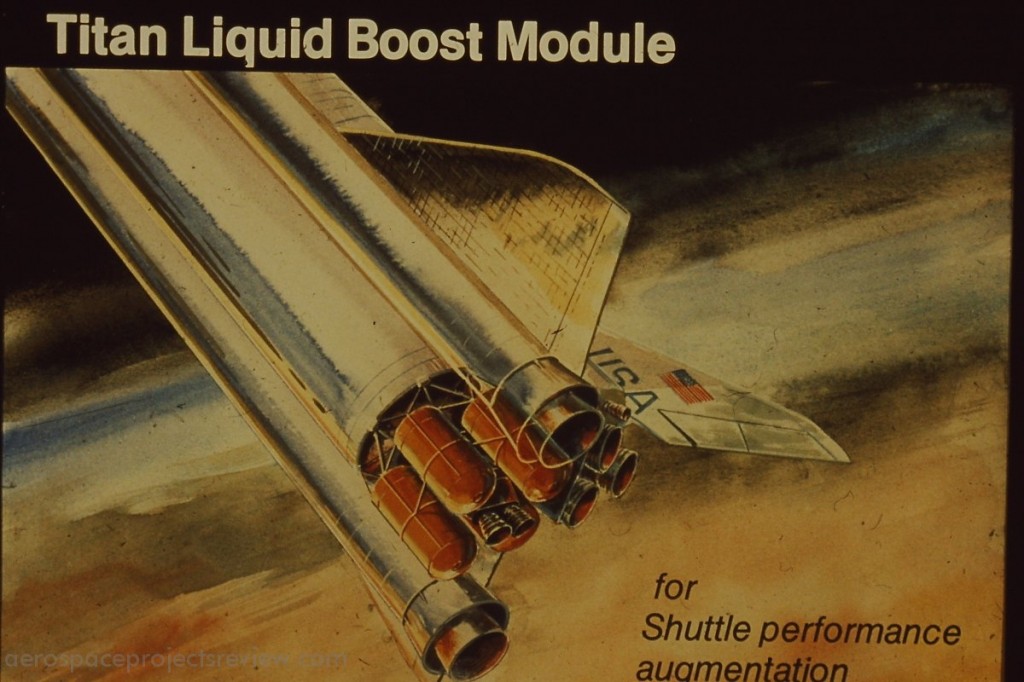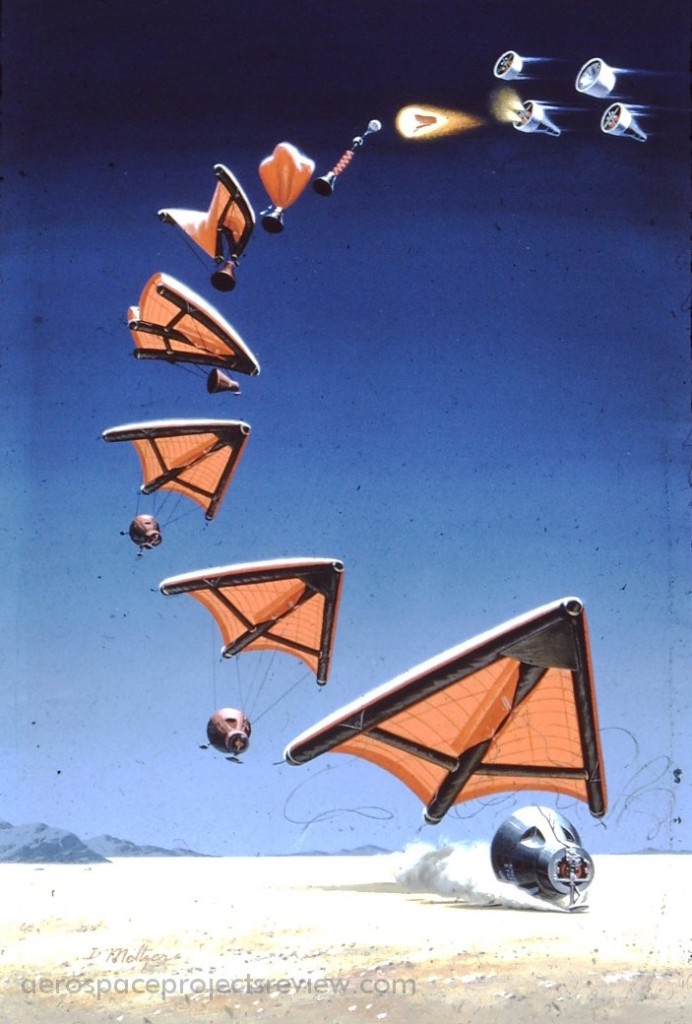OK, here’s one of the projects I’ve been working on of late… scanning and repairing the old “Collier’s space series” articles from the early 1950’s for reprinting in the AIAA-Houston section newsletter. As far as I’m aware, this is the first time these have been republished in clear, high-rez and full color format since the original release.
For those unaware, in the early 1950’s Collier’s magazine (similar to “The Saturday Evening Post”) ran a series of articles written by the likes of Willy Ley and Werner von Braun, illustrated by the likes of Chesley Bonestell and Fred Freeman, describing what the future of manned space exploration may look like. Their vision was, to put it mildly, grandiose, and far exceeded what the actual space program became and did… but the impact on the public of these articles helped lead to the space program becoming popular with the public… and the government. The designs that were produced, such as the Ferry Rocket and “Wheel” space stations, are comfortably described as “iconic.”
The July/August 2012 issue of AIAA-Houston Horizons reprints the complete first Collier’s article from March 22, 1952. The original magazine layout included numerous ads and extraneous bits that were edited out of this reprint, and in several cases replaced with “Mini-APR” articles, several of which tie directly into the Collier’s series. This first article includes about 30 pages of the original Collier’s stuff. Future issues of Horizons will carry the complete set of Collier’s article,s including the Moon exploration and Mars exploration articles.
As always, Horizons is a free-to-download PDF. New for this issue, it is available in both high and low resolution.
Feel free to spread the word about this. The more it is downloaded from the AIAA site, the more interest is shown in it, the more might be done with this in the future.
